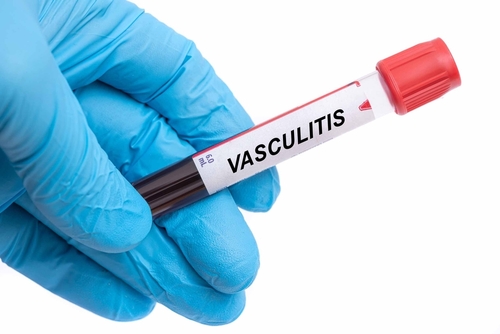
In rheumatology, frameworks and diagnostic schemas are often created to help organize differentials and assist in reaching a diagnosis. Large-vessel vasculitides include giant cell arteritis and Takayasu arteritis on the differential most commonly. However, a recent study provided a unique characterization of a rare but observed phenomenon: large-vessel involvement from antineutrophil cytoplasmic autoantibody (ANCA)-associated vasculitis!
ANCA-associated vasculitis (AAV) is one of the prototypical forms of small-vessel vasculitides. Large-vessel involvement of AAV is rare, but it is described in case reports involving temporal arteries, aorta, and periaortic soft tissue. Histopathology from temporal artery biopsies has demonstrated vasculitis involvement in patients with AAV. Thus, Kaymakci et al, of the Mayo Clinic, sought to investigate and characterize the frequency, clinical characteristics, and outcomes of patients with large-vessel involvement from ANCA-associated vasculitis (L-AAV) in their retrospective study.1
Medical records of patients with a diagnosis of L-AAV seen between 2000 and 2021 were reviewed. They enrolled adult patients 18 years or older at time of diagnosis of L-AAV who fulfilled 2022 American College of Rheumatology/European Alliance of Associations for Rheumatology classification criteria for granulomatosis with polyangiitis (GPA), microscopic polyangiitis (MPA), or eosinophilic granulomatosis with polyangiitis; had positive ANCA test results, with at least 1 outpatient or inpatient visit; and had a diagnosis of L-AAV verified by the research team. Investigators defined arteritis of the temporal artery as histopathologically confirmed inflammation of the temporal artery. Aortitis or periaortitis were defined as histopathologic and/or radiologic confirmation of inflammation of the aorta or soft tissue around large arteries, respectively, attributable to AAV.
More than 3700 patients seen at Mayo Clinic from 2000 to 2021 had at least 1 International Classification of Diseases, Ninth Revision or International Statistical Classification of Diseases and Related Health Problems, Tenth Revision code for AAV. In that group, researchers identified 36 patients with L-AAV who met eligibility criteria for the study. Most patients (69%) were diagnosed with large-vessel vasculitis and AAV within a 1-year timespan. The most frequent treatments included glucocorticoids (36/36), rituximab (19/36), and methotrexate (18/36). GPA was more frequent among patients with aortic-AAV and periaortic-AAV, while the majority of patients with temporal artery-AAV had MPA.
When patients were diagnosed with L-AAV, many also had other, more classical symptoms, such as renal and pulmonary involvement, or other systemic features (neurologic, leukocytoclastic vasculitis, constitutional, or ear, nose, and throat involvement). The authors also noted that aortitis or periaortitis sometimes preceded the AAV diagnosis, and other times followed after an established diagnosis of AAV. In patients who developed aortitis and periaortitis after an AAV diagnosis, elevated inflammatory markers and chest or back pain were the common features that prompted physicians to order additional imaging studies.
The authors advocated that ANCA testing should be considered in all patients presenting with large-vessel vasculitis to ensure timely diagnosis of L-AAV. Additionally, they noted those presenting with temporal artery arteritis should be evaluated for clinical features of small-vessel vasculitis and, if present, ANCA testing should be obtained as well. It is unknown why vascular inflammation would target both small and large vessels in a subset of patients, the authors emphasized.
In rheumatology, we are used to operating in scientific realms of uncertainty and gray areas; this study highlights a rare but important consideration not to miss!







 © 2025 Mashup Media, LLC, a Formedics Property. All Rights Reserved.
© 2025 Mashup Media, LLC, a Formedics Property. All Rights Reserved.